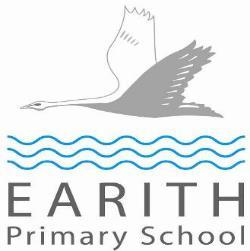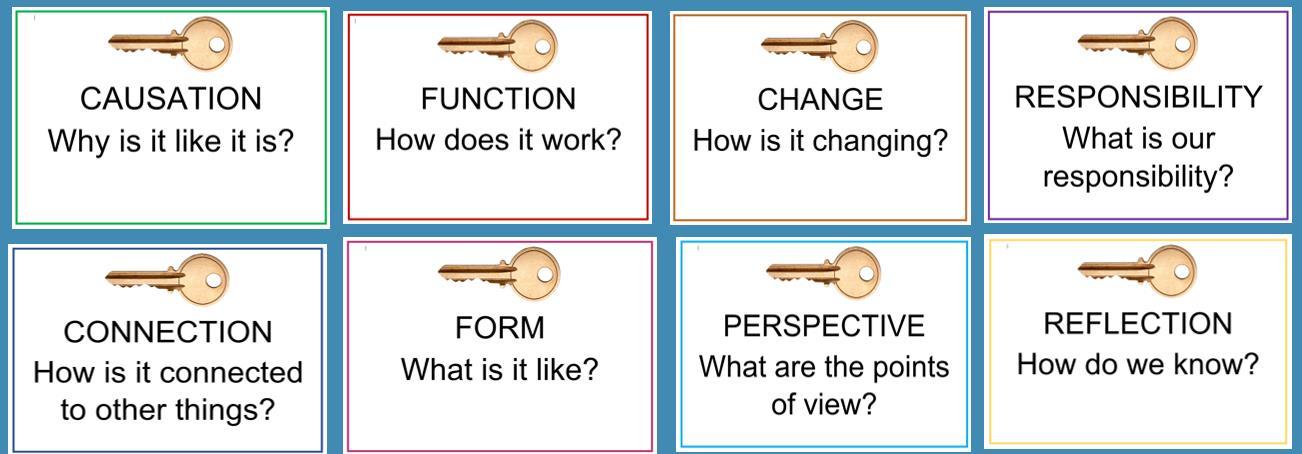

How we Learn Design and Technology at Earith Primary School: Intent, Implementation & Impact
Intent
It is our intent for pupils:

To understand the important and integral role which design and the creation of designed products play in our society.
To develop the creative, technical and practical expertise needed to perform everyday tasks confidently and to participate successfully in an increasingly technological world.
To build and apply a repertoire of knowledge, understanding and skills in order to design and make high-quality prototypes and products; creating these for real and relevant purposes and for a wide range of users, considering their own and others’ needs, wants and values.
To critique, evaluate and test their ideas and products and the work of others.
To think and intervene creatively to solve problems both as individuals and as members of a team.
To innovate and take considered risks during the design process.
To carry out practical tasks safely.
The school uses the Primary Knowledge Curriculum in order to support the delivery of the Earith Design Technology Curriculum. The principles of the PKC knowledge-rich curriculum are:
Knowledge is valued and specified.
Knowledge is well-sequenced.
Knowledge is taught to be remembered.
The content of the PKC DT curriculum has been carefully chosen by subject experts and has been sequenced in a meaningful way that enables children to make connections and progress from unit to unit, term to term and year to year. This means the knowledge children will gain has been carefully specified, ordered coherently and builds over time. The PKC DT curriculum meets the aims of the National Curriculum for DT. As the children work through the DT curriculum, they will know more, understand more and remember more about the processes of designing, making and evaluating products. They will demonstrate this knowledge when using tools or skills in other areas of the curriculum and in opportunities out of school.
Implementation
Where appropriate, links are made across subject disciplines to enable children to make meaningful connections. This is further enhanced by teachers referencing how the school’s Key Concepts may link to the particular DT lesson or unit being taught, and to that of other subjects recently or previously taught – building pupils’ schema, over time:
Earith Primary School’s Key Concepts:

Units of study are carefully sequenced by the Curriculum Lead, for mixed age classes, in a two year cycle (A and B), to allow for progression from KS1, LKS2 and UKS2 as well as through the academic year. The progression of skills is tracked by teachers using the Chris Quigley Curriculum Milestones.
Each lesson starts with a prior learning review, where children are supported to retrieve prior knowledge and make connections. There is an emphasis on explicitly teaching vocabulary, with key vocabulary being introduced and orally rehearsed at the beginning of each lesson. Key vocabulary is contextualised throughout the lesson and children are given opportunities to apply new words. Children have many opportunities to talk, answer questions, explain their learning and work independently. Throughout each lesson, teachers monitor pupil responses and provide effective, live feedback (in line with the school’s marking procedure). The learning sequence, as described, for DT is supported by the teacher’s PowerPoint, which explicitly references the part of the lesson
children are in, as well as signposting other key information, including visuals/hyperlinks to any resources which support the lesson delivery:
Lesson Sequence: DT

This ensures children know what to expect, no matter what year group and DT lesson they are being taught – from Reception to Year 6. Teachers carefully consider the information their teaching slides contain so as not to over burden pupils’ cognitive load.
Knowledge Organisers are also used to complement teaching & learning at the class teacher’s discretion. These are made available to parents, alongside the curriculum newsletter for each half term.
EYFS
DT in the EYFS Framework falls predominately under the Expressive Arts and Design and Physical Development Areas of Learning. The Characteristics of Effective Learning are threaded through all aspects of learning and are the fundamental ways in which children within EYFS learn. During the Early Years, children will be developing knowledge, skills and understanding, which will prepare them for the Year 1 curriculum. Physical Development, particularly of fine motor skills, is very important for children acquiring the pre-requisite skills for the DT curriculum.
KS1 & KS2
Each year, children will partake in a ‘cook’, ‘sew’ and ‘build’ unit. Each PKC unit has been devised to be delivered in a five-hour block, which can be taught over a single day, two half days or spread over a number of weeks. Teachers may choose to block DT or extend lesson length to allow pupils time to explore, create, solve problems and fully involve themselves in the practical aspects
of the subject. At Earith, the timetabling of DT within the school year has been planned to maximise opportunities for children to design and make products for real and relevant purposes. For example, to sell their products at the Christmas Fayre. Two different aspects of design are interwoven into PKC units: environment & sustainability and enterprise & innovation.
Concepts and skills progress gradually throughout the course of the six years of study. In ‘cook’, children learn to cook from recipes which gradually build basic culinary skills, culminating in UKS2 with the creation of a mezze-style meal requiring the pupils to produce various small dishes. Whilst studying these practical skills, they learn about concepts relating to food such as nutrition, seasonality, food production, transportation and food from different cultures. In ‘sew’, children practise using fabric and thread to learn basic sewing techniques to create objects which demonstrate embroidery, appliqué, weaving and plaiting. Concepts such as the properties and creation of different fabrics, fast fashion, industrialisation, waste, recycling and pollution are interwoven into these activities. In ‘build’, children learn about the creation of structures and mechanical and electrical devices to create products such as cars, moving cards, toys and books.
The sequence of lessons follow a structure to enable the children to become familiar with, understand and practise the process of design: research and investigate, design, make, use and evaluate. The planning for each unit of work specifies the product the children will make, the purpose and user of the product. This specification acknowledges the importance of purpose and user within the design process. Throughout the course of the lessons, the children explore existing products and their uses, generate ideas and designs by creating drawings and prototypes against criteria which they devise having considered purpose, function and appeal. Evaluation against these criteria concludes the process. Discussion is an important part of this process, as is consideration of the properties of potential materials and the choice of tools. Practical tasks are risk assessed by teachers and children are made aware of health and safety issues related to the tasks undertaken.
Learning about fundamental concepts, skills and developments in history and understanding of the influence of key individuals in the field are interleaved into this process-driven structure. The curriculum is designed to be delivered alongside the PKC art, science and history curricula, as parts of it directly relate to areas of knowledge which the pupils acquire in these subjects.
Children’s DT work is recorded in Subject Portfolios. These should evidence the design process and may include notes, annotated photographs, drawings, diagrams and photographs of prototypes and finished work, as well as children’s evaluation of the projects which they undertake. This will ensure that teachers and pupils can easily identify progression in knowledge, process and application of skills.
Children have opportunities for outdoor learning in DT lessons. For example, to research existing structures or to observe technologies being used in real life. Children may be expected to work as a part of a team in DT, learning to support and help one another towards a challenging, yet rewarding goal. As a school, we mark significant national events such as STEM Week to celebrate Design and Technology as a subject.
Assessment:
Live, verbal feedback, is used to support and challenge children’s development in DT.
End of Unit outcomes are mapped out as part of the Two Year Cycle. These have been carefully planned in order to include a range of outcomes that– not only showcase pupils’ DT knowledge & kills – but reinforce or stretch existing skills and knowledge across the curriculum.
End of unit quizzes may be used to further bolster knowledge retention and love for this subject.
Impact
The impact of the DT curriculum is measured in several ways:
Formative assessment:
Teachers respond to the day-to-day emergent needs of pupils, providing support and feedback during the lesson (including at the start: reviewing prior learning) and in informing the next steps for subsequent lessons.
Knowledge assessment:
Pupils take part in cyclical quizzes at multiple points throughout the year in order to provide an opportunity to recall what they have learnt: this process supports memory retention and recall – knowing more; remembering more.
In EYFS, Target Tracker is updated termly, using additional documentation, such as Development Matters, to support. At the end of the Reception Year, judgements are made against the Expressive Arts and Design and Physical Development Early Learning Goals.
Leadership:
The DT Lead engages with, and leads on, DT CPD to ensure that they, and all staff, have the subject knowledge necessary to deliver the Earith DT curriculum.
The DT Lead monitors and evaluates the DT curriculum through a range of sources: lesson visits/typicality walks, planning scrutiny, pupil learning conversations, response to CPD and teacher review meetings. Triangulated, these sources form the basis of evaluating the impact of the curriculum on pupils’ knowledge & skills. As a result, the DT Lead’s Subject Action Plan is further informed by emerging strengths and priorities. The DT Lead uses our intent for the subject, as specified at the beginning of this document, to underpin their Action Plan. They also draw on relevant research when identifying and leading on actions that will drive the subject forward in our school.
The DT Lead reports to the Earith governing body regarding the quality of education in DT.
